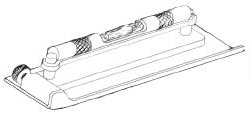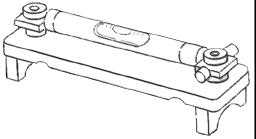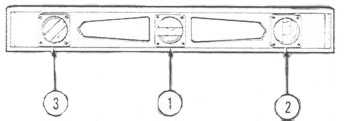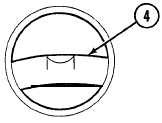TM 9-243
TYPES AND USES
Levels are tools designed to prove whether a plane or
surface is in the true vertical or true horizontal. All levels
consist of a liquid-filled glass tube or tubes supported in
a frame.
MASTER PRECISION LEVEL
The master precision level has a ground and graduated
main vial (1). The top and bottom of the level are milled
and ground to make sure both surfaces are absolutely
parallel. This level is used to determine the true hori-
zontal with the main vial (1). The true vertical is deter-
mined by using the two smaller vials (2).
STRIDING LEVEL
The striding level is a machinist’s level which is mounted
on a raised base. This level is used to span existing
cabling, piping, or similar obstructions. It is extremely
useful in a machine shop for checking the true horizontal
of the flatway on a lathe.
CARPENTER’S LEVEL
MACHINIST’S LEVEL
The carpenter’s level has three vials which are mounted
horizontally (1) vertically (2) and at a 45 degree
angle (3). The carpenter’s level is used in construction
for checking for true vertical, true horizontal, and 45
degree angles.
The machinists level has an extra large vial. This
increases its accuracy and sensitivity. Some of these
levels have grooved bottoms which fit over pipes and
shafts. They are used in machine shops for leveling
work and equipment.
IRON BENCH LEVEL
The iron bench level is made of a special design casting
which insures its lightness, strength, and rigidity. It is
used mostly in the construction industry. It may also be
used in a machine shop.
Some levels have a bent tube (4) which allows the
bubble to settle quickly.
LINE LEVEL
The line level is a single vial in a metal case with a hook
on each end for hanging on a cord. It is used to check
whether two points are level, such as two points on a
floor or in an elevation. It must be used with a tightly
stretched cord.
10-2











